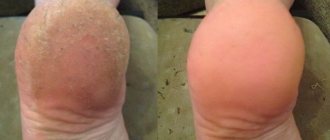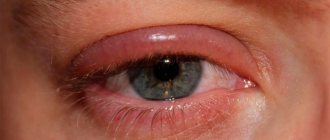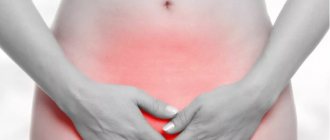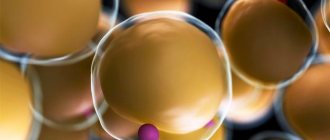- Reasons for appearance
- Features of dry calluses
- How to get rid of dry calluses?
- When should you see a doctor?
- How to avoid the appearance of new calluses?
A dry callus is a limited, keratinized area of skin that causes discomfort due to pressure on the nerve endings during contact with it. The formation is formed due to prolonged mechanical impact on the skin and becomes chronic. Callus can be observed on the feet and hands; it looks very unattractive and requires treatment.
Causes of calluses
Before getting rid of corns on your feet, you need to find out the main reasons for their appearance and eliminate them. Most often, calluses occur due to:
- using uncomfortable, narrow shoes or shoes of the wrong size;
- wearing hard shoes on bare feet or a very thin nylon sock;
- a heel that is too high, which causes compression and excessive stress on the forefoot;
- various foot diseases;
- walking barefoot for a long time;
- excessive sweating of the feet;
- wearing shoes with hard seams inside or with rubbing surfaces;
- wearing socks that are too large and cause wrinkles;
- selection of shoe models with thin soles.
Treating calluses at home
To get rid of the callus, you can consult a doctor.
Or you can do it yourself, at home.
The first thing to do is remove excess skin.
To do this at home you can use:
- pumice
- pedicure brushes
- scrubs
Do not try to cut the callus with a blade or remove it in any other dangerous way.
This can cause injury to your skin.
If the integrity of the vessels is damaged, bleeding will occur.
Inflammation and swelling may develop in this area.
At best, the pain will make it difficult for you to walk for several days.
And in the worst case, an infection will occur.
If suppuration occurs, it may be necessary to open the wound and drain it.
How to get rid of calluses on your feet yourself
The easiest way to cure a water callus is to wait for it to burst, or to pierce it yourself. However, it is important to take care of disinfection, otherwise there is a risk of infection.
When deciding how to get rid of dry calluses, you need to take into account the area and depth of the lesion. For example, a small thickening on the little finger can be removed with a pedicure file or pumice stone. You may first need to soften the skin in a hot bath with the addition of various components.
Dry calluses on the foot can also be removed by applying salicylic ointment at night or by sticking a special medicated patch.
However, doctors do not recommend removing calluses yourself, as there is always a risk of damaging the skin and causing infection, which will create additional problems and complicate treatment.
What is the difference between a callus, a spur on the foot and other diseases?
It is not difficult for a doctor to distinguish a callus from other pathological processes.
But for a person without medical education this can be difficult.
Let's talk about how hyperkeratosis differs from other pathologies.
Sometimes a callus is confused with a heel spur.
With this disease, the plantar fascia becomes inflamed.
As a result, walking becomes painful.
The very first steps in the morning cause the most discomfort.
Calcium deposits gradually form.
It is much harder than a callus.
The skin color usually does not change, while with hyperkeratosis it becomes yellow, brown, and sometimes black.
Plantar warts look like a callus.
These are formations of viral origin.
To distinguish them, you need to squeeze the skin from the sides.
How doctors remove calluses
The fastest, safest and most painless method is hardware procedures. Removal of the formation is carried out using a special cosmetology device equipped with an automatic cutter fixation system. This eliminates the risk of soft tissue damage. The procedure itself is painless and does not require special preparation. The session time ranges from 10 to 60 minutes. It depends on the number of dry calluses and the degree of their neglect.
Before starting work and during the procedure, the skin is thoroughly disinfected. In case of increased sensitivity, the patient is given topical anesthesia. When treating calluses and corns, the skin is cooled using a spray.
After removing a callus or corns, the skin is polished, and the edges of the treated area are smoothed so that there is no discomfort when walking later. After completion of the procedure, the treated surface is protected with a bandage.
In this way, you can remove any corns, including dry calluses on the foot.
Features of hardware procedures:
- absolute safety – the surface being treated is thoroughly disinfected, which eliminates the risk of infection;
- speed – unlike home procedures, the removal of corns and calluses in a cosmetology clinic is performed quickly and efficiently. One procedure is enough;
- painlessness – automatic fixation of the cutter on the equipment protects the skin from accidental injury and pain;
- no contraindications – anyone can use hardware callus removal.
Calluses: Common Risk Factors
The immediate cause of calluses is mechanical friction to which the skin is exposed.
However, some people develop hyperkeratosis and others do not.
The reason for this is external and internal factors that affect the risk of calluses.
Common factors include:
- age
- floor
- body mass
With age, the risk of hyperkeratosis increases.
In men, the peak incidence is 50-60 years, and in women – 60-70 years.
This is due to age-related skin changes.
They are as follows:
- dehydration of the epidermis
- reduction in the thickness of subcutaneous fat
- epithelial cells become flatter
- other dermatological diseases are added that make the skin more vulnerable to mechanical stress
As you age, your skin becomes tougher.
It is less elastic and not as resistant to stretching.
The most statistically significant correlation between the risk of callus formation and age is observed in diabetics.
It is also known that with age, the feet become flattened.
The height of the longitudinal arch decreases.
This changes the pressure that the body weight puts on different parts of the feet.
Gender influences the risk of developing calluses.
Statistics show that women with foot hyperkeratosis seek medical help higher than men.
The reasons for this phenomenon are not known.
Women have higher skin elasticity.
It would seem that the frequency of callus formation in them should be lower.
Some researchers have linked the higher incidence of hyperkeratosis in females to shoe preferences.
Men primarily choose convenience over design.
While women often wear uncomfortable shoes that rub their skin, just to look more attractive.
Diabetes mellitus affects the appearance of calluses in both men and women.
The risk of their formation increases.
In addition, diabetics are characterized by peculiarities in the localization of calluses.
They usually appear on the dorsum of the little toe or the plantar surface of the first (“big”) toe.
Another common risk factor for calluses is a person's body weight.
It has been reliably determined that the higher it is, the more often hyperkeratosis is formed.
Moreover, its main localization is the heel region.
It is the back of the foot that experiences increased stress in obesity.
To a lesser extent, it increases in the midfoot.
The fingers don't suffer at all.
Therefore, the frequency of callus formation here is the same as in people with normal weight.
Recommendations after removing dry calluses on feet
After hardware removal of calluses and corns, it is recommended to wear loose shoes made from natural materials. It is better to give up high heels for 2 weeks, and also not visit swimming pools and saunas for a month. It is better to treat the skin with a disinfectant composition.
Patients who successfully get rid of dry calluses experience lightness in their legs and no pain while walking.
It is better to prevent the occurrence of corns and regularly remove rough skin on the feet. By periodically undergoing a medical hardware pedicure procedure, you will not be aware of such problems as rough skin on your feet and the occurrence of complications.
If you want to remove dry callus, contact the SM-Cosmetology clinic. At the initial consultation, the podologist will conduct an examination and select the optimal method to solve your problem. You can remove calluses and corns after one visit to a cosmetology clinic.
—>
Laser excision of callus
Laser callus removal remains a priority treatment method.
Allows you to effectively eliminate the problem with minimal risk of recurrence.
The laser penetrates into the deep layers of the dermis, which makes it possible to remove the root completely, rather than partially.
The operation of the device is based on the reproduction of a laser beam with special light properties:
- Monochromatic: Has only one specific wavelength or color.
- Coherence: Vibrates in the same phase or synchronously.
- Divergence: the beam works in a given direction.
During the manipulation, the epidermal layer is “burned out”, one after another.
The manipulation requires the use of an anesthetic.
The average session duration is no more than 10-15 minutes.
Before using the laser, the callus is treated with antiseptic drugs.
After laser irradiation, a dense crust forms, which will disappear after 10-14 days.
Laser treatment to remove calluses leads to cell regeneration.
It has an anti-inflammatory effect and stimulates the local immune system.
Thus, it promotes rapid healing of wounds.
However, the main advantage of the laser is the complete removal of callus even with a deep root location.
Often, one visit to a dermatologist is enough to effectively eliminate the problem.
Doctor callus cream
Product based on salicylic acid and sulfur.
Less significant substances: corn oil, paraffin, petroleum jelly.
The procedure for eliminating calluses begins with a bath.
Soda is added to it.
For 1 liter of water, take 1 tablespoon of sodium bicarbonate.
The foot should be steamed in water for 25 minutes.
Then you need to wipe the skin dry and apply Doctor Callus to the skin.
The product is placed under the patch.
It is worn for 1-2 days.
After removing the bandage, the callus softens and can be easily cleaned off.
Sometimes the procedure has to be done 3-4 times if the callus is very dense or thick.
3.Prevention of corns
For many people, the problem of corns is chronic.
Folk remedies, cosmetic procedures and foot care bring only temporary relief. In this case, it is worth considering the problem as chronic and approaching treatment comprehensively.
The constant formation of corns always indicates a serious imbalance in the body or disturbances in lifestyle. In this case, the problem should be solved in two ways - along with cosmetic methods, it is necessary to focus on identifying the reasons that cause increased keratinization of the skin of the feet.
Seeking medical help often includes consultations with a dermatologist, orthopedist, and endocrinologist. A systematic approach, the study of anamnesis and lifestyle make it possible to identify the main factors of increased death of epidermal cells. If a connection between corns and health problems is discovered, treatment of the underlying disease always helps to solve the problem with the skin of the feet. The effectiveness of the therapy can be accelerated by local procedures aimed at eliminating skin growths and further prevention:
- Anti-callus plasters;
- Keratolytic cream;
- Hot foot baths;
- Natural and synthetic pumice;
- Softening cream with medicinal herbs.
About our clinic Chistye Prudy metro station Medintercom page!
4. Treatment of corns
In especially severe cases or when a quick, perfect result is needed, methods of surgical removal of corns are used. Modern aesthetic medicine offers painless and effective procedures for tidying up the feet:
- Laser therapy;
- Cryodestruction;
- Hardware pedicure.
Sometimes corns suddenly begin to form on perfectly healthy feet. In this case, it is necessary to carefully study what has recently changed in your general condition or lifestyle. It often turns out that the cause is new shoes, a change in profession, unusual hobbies, or a change in diet. To solve such problems, it is enough to restore balance in the body, reduce the load on the legs, and adjust the diet. If there is a connection with the identification of any chronic disease, you need to focus on its treatment. Properly selected therapy will have a comprehensive positive effect, and the corns will cease to bother you again as you recover.








